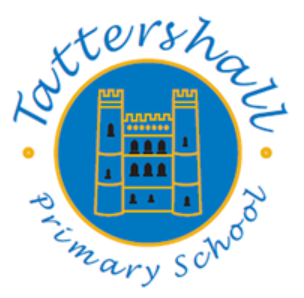Computing
At Tattershall Primary, we aim to make our children confident users of modern technology. In this modern and ever-changing age of technology it is important that children learn a variety of skills when its comes to technology: Algorithms for coding and creating software; media and photography; office skills including word, excel and publisher and most importantly how to stay safe both online and when using different platforms.
Intent
Computing at Tattershall Primary School intends to develop ‘thinkers of the future’ through a modern, ambitious and relevant education in Computing. Our Computing Curriculum aims to instil a sense of enjoyment around using technology and to develop pupils’ appreciation of its capabilities and the opportunities technology offers to create, manage, organise and collaborate. ‘Tinkering’ with software and programs forms part of the ethos of our curriculum as we want to develop pupils’ confidence when encountering new technology, which is a vital skill in the ever evolving and changing landscape of technology. It is important to us that pupils understand how to use the ever-changing technology to express themselves, as tools for learning and as a means to drive their generation forward into the future. Through our curriculum, we intend for pupils not only to be digitally competent and have a range of transferrable skills at a suitable level for the future workplace, but also to be responsible online citizens.
Our Computing curriculum enables pupils to meet the end of Key Stage Attainment Targets outlined in the National Curriculum and the aims align with those in the National Curriculum. In conjunction with our PSHE and RSE Curriculum, our Computing curriculum also satisfies all of the objectives of the DFE’s ‘Education for a Connected World’ framework. This guidance was created to help equip children for life in the digital world, including developing their understanding of appropriate online behaviour, copyright issues, being discerning consumers of online information and healthy use of technology.
Implementation
At Tattershall Primary School we have used the curriculum design model from ‘Kapow Primary’. 
The National Curriculum ‘Purpose of Study’ states:
‘The core of computing is computer science, in which pupils are taught the principles of information and computation, how digital systems work, and how to put this knowledge to use through programming. Building on this knowledge and understanding, pupils are equipped to use information technology to create programs, systems, and a range of content. Computing also ensures that pupils become digitally literate – able to use, and express themselves and develop their ideas through, information and communication technology – at a level suitable for the future workplace and as active participants in a digital world.’
Therefore, our Computing curriculum is designed with three strands which run throughout:
- Computer Science
- Information Technology
- Digital Literacy
Our curriculum is organised into five key areas, creating a cyclical route through which pupils can develop their computing knowledge and skills by revisiting and building on previous learning:
- Computing Systems and Networks
- Programming
- Creating Media
- Data Handling
- Online Safety
The implementation of our curriculum ensures a broad and balanced coverage of the National Curriculum requirements, and our ‘Skills Showcase’ units provide pupils with the opportunity to learn and apply transferable skills. Where meaningful, units have been created to link to other subjects such as Science, Art and Music to enable the development of further transferable skills and genuine cross-curricular learning.
Lessons incorporate a range of teaching strategies from independent tasks, paired and group work as well as unplugged and digital activities. This variety means that lessons are engaging and appeal to those with a variety of learning styles. Adaptations are planned for every lesson to ensure that all pupils can access the intended learning and be successful and so that there are opportunities to stretch pupils’ learning wherever possible. Knowledge Organisers for each unit support pupils in building a foundation of factual knowledge by encouraging recall of key facts and vocabulary.
At Tattershall Primary School Computing is taught discreetly from Year 1 to Year 6, mostly through a weekly lesson. Each year group is taught independently, despite our two mixed age classes, due to the nature of the progression of skills and knowledge within the Computing curriculum. To enable us to do this, we utilise an additional teacher so that Class 4 (Years 3 and 4) and Class 5 (Years 4 and 5) can be taught in year groups rather than mixed age classes. Online safety is taught across each term both as a ‘stand-alone’ Computing lesson and through our PSHE curriculum as well as other enrichments such as through assemblies and engagement with Safer Internet Day.
For full information about our Computing Curriculum (including curriculum design, Knowledge Organisers and assessment procedures) please look at our Curriculum Handbook (Non-Core) here.
